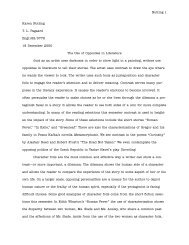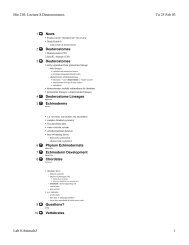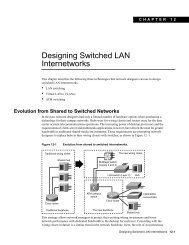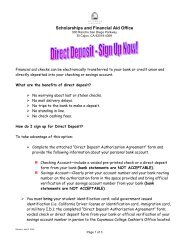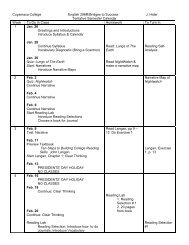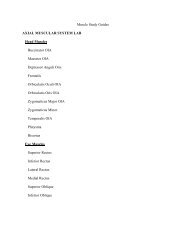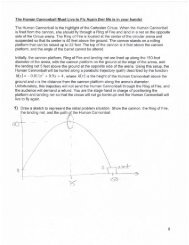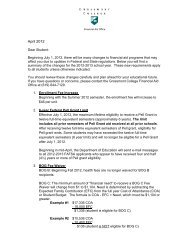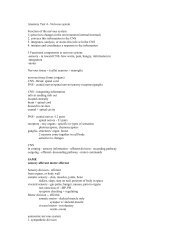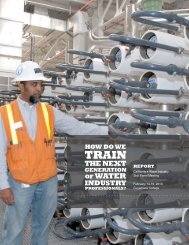You also want an ePaper? Increase the reach of your titles
YUMPU automatically turns print PDFs into web optimized ePapers that Google loves.
Figure9 shows the changes made to RouterC.Figure 9RouterC(config)#ip route 172.16.0.0 255.255.0.0 serial0RouterC(config)#endRouterC#show ip routeCodes: C - connected, S - static, I - IGRP, R - RIP, M - mobile, B - BGPGateway of last resort is not set172.16.0.0/16 is variably subnetted, 2 subnets, 2 masksC 172.16.4.0/24 is directly connected, FastEthernet0S 172.16.0.0/16 is directly connected, Serial0C 192.168.1.0/24 is directly connected, Serial0RouterC#<strong>The</strong> no ip classless CommandSpecial Note: We are now going to discuss the difference between classful routing behavior andclassless routing behavior. It is very important to understand that this has nothing to do withclassful routing protocols or classless routing protocols. Classful and classless routing protocolsdeal with how the routers exchange routing information, which is one of the ways routes get entered intothe routing table. In our discussions of the routing table, including classful and classless routingbehaviors, we are not concerned about how the routes got into the routing table. Instead we are onlyconcerned with how the routing table finds the best route, after the routes get entered into the table.Classful and classless routing behavior (no ip classless and the ip classless commands) arecompletely independent of any dynamic routing protocol which might be used. It makes no differencewhether or not we are using a classful routing protocol like RIPv1 or a classless routing protocol likeOSPF.Looking at the configuration and routing table in Figure 10 for RouterB we might assume that RouterB willuse the default route to forward any packets that it does not match any of the other routes in the routingtable. As we will see that may or may not be the case.Looking at Step 4 of the Route Lookup Process, we see what happens next may depend on whether ornot we are using classful or classless routing behavior.<strong>The</strong> route lookup process:Step 1. <strong>The</strong> router begins by finding a network route, ultimate or parent that matches the IP packet’sdestination address.Step 2. If the matching network is an ultimate route (not including subnet routes), and there are no morespecific routes, this is the route used to forward the packet.Step 3. If the matching network is a parent route, then the subnet routes are looked through to find thebest-matching route.Step 4. If there is no match of an ultimate or a subnet within a parent route, than what happens dependsupon the whether or not the router is using in classful or classless routing behavior.10



